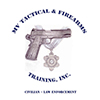ACTIVE SHOOTER ARMED RESPONSE
Sixteen-Hour Training Course
0900-1700 Both Days
Day One (September 25) — Knowledge Development & Practical (8 hours)
Trigger Burst Training Center
3537 Old Conejo Road, #120
Newbury Park, CA 91320
Day Two (September 26) — Range Training (8 hours)
“A Place to Shoot”
33951 San Francisquito Canyon Road
Santa Clarita, CA 91390
Objective: To provide law enforcement officers and committed armed civilian students with the tactical mindset, knowledge, and skills necessary to survive an active shooter/killer incident and to help others to survive.
Background: Active shooter/killer incidents are dynamic, high-risk events, which occur suddenly, often without warning. Traditional methods and tactics may not be appropriate. Your survival and your family’s survival may require rapid decision-making and decisive action. Active killers — domestic active shooters and strategic level terrorists — almost always plan their attacks for heavily populated environments such as schools, parks, office buildings, shopping malls, restaurants, movie theaters, hospitals, places of worship, and other locations that offer high victim populations. The time to prepare is now if you and your family spend time in any public venues.
Instructor: Sergeant Brian Fitzpatrick (Ret.), CA P.O.S.T. Certified Active Shooter Response Instructor. During his thirty-four-year law enforcement career, Brian responded to several in-progress active shooter incidents and twice received his department’s Medal of Valor. Sgt. Fitzpatrick wrote and instructed his agency’s Active Shooter Response protocol.
Topics Covered Include:
- Developing a tactical/survival mindset
- History and dynamics of benchmark active shooter events in the U.S.
- Elements of an active shooter profile and timeline
- Recognizing possible early warning signs—Five Phases of an Active Shooter
- Civilian survival strategies
- Surviving a strategic level terror attack
- How to build your own Active Shooter Survival Kit
- Use of force law and applicable firearms law
- Tactical movement in structures—blocking, room-clearing, using terrain features
- Approaching/clearing/moving past doorways, hallway intersections & stairwells.
- Small unit and partner tactics and formations
- Safely interfacing with first responders
- Firearms safety rules on and off the range
- Gun handling and engaging threats in a populated environment
- Shoot/no shoot drills
- Live-fire, simulated combat scenarios
Tuition: $590.00
Optional curriculum: Non-live-fire format (day one only): $295.00
Required Equipment & Ammunition: A quality flashlight with momentary end-cap activation and extra batteries, a quality semi-automatic pistol with at least three magazines (five if below ten round capacity), strong-side outside waistband (OWB) holster (No Blackhawk Serpas), belt pouches for at least two extra mags, a sturdy belt, personal eye/ear protection, and 400 rounds of handgun ammunition.
Optional Equipment (Range Day): A center-fire patrol/tactical rifle with sling or tactical shotgun with sling. Prior formal rifle or shotgun training is mandatory for students bringing shoulder weapons. Rifles must be zeroed (iron sights & optics) and properly lubricated before the start of range day. Students with shoulder weapons will still be required to have a handgun, holster, etc.
Prerequisite Training: Intermediate Defensive Pistol, equivalent outside training or current law enforcement/military firearms training (including holster work)

